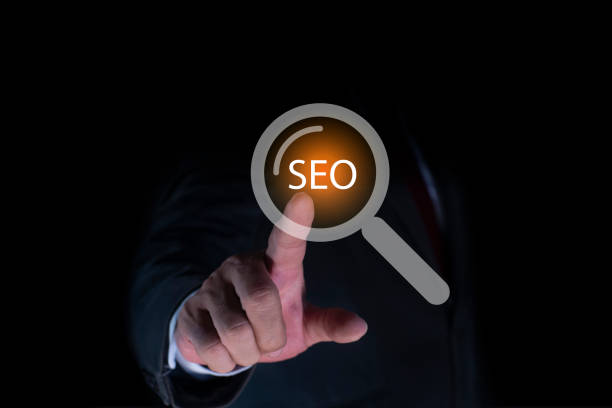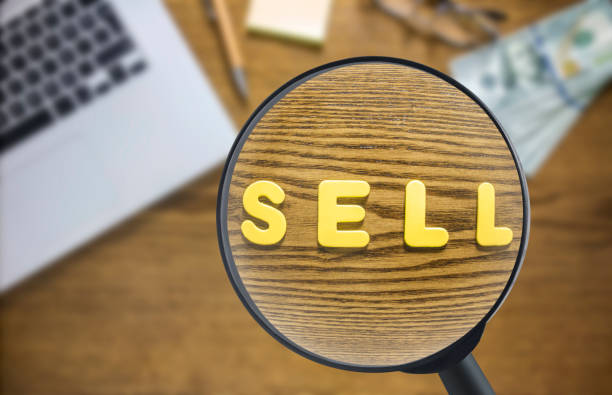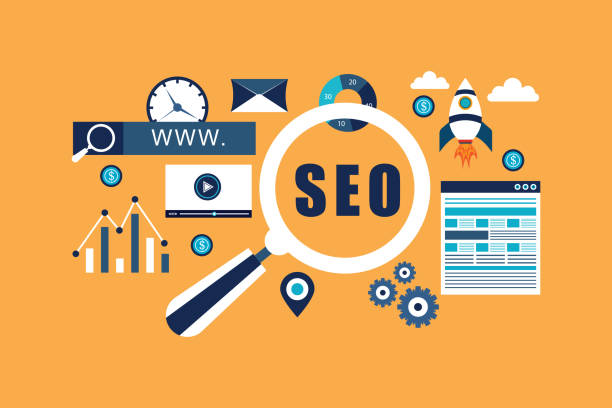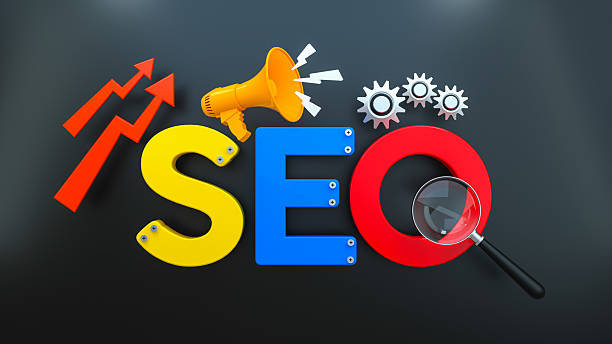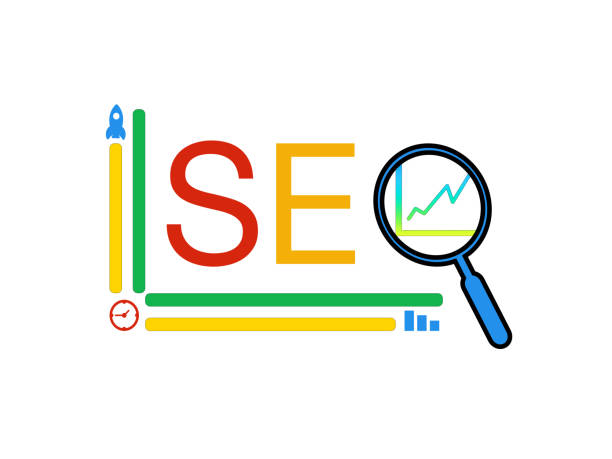What is On-Page SEO and Why is it Important?
On-Page SEO refers to the set of actions taken within a website to improve its ranking in search engine results.
These actions include optimizing content, site structure, HTML tags, and other internal elements of the website.
SEO, in general, includes on-page SEO and off-page SEO.
While off-page SEO relates to activities such as link building and social media marketing, on-page SEO is entirely within your control, and you can improve your site’s ranking by making effective changes.
The importance of on-page SEO lies in the fact that it helps search engines better understand the content of your site and display it to users who are looking for related information.
A site with strong on-page SEO has a better chance of achieving a high ranking in search results and attracting organic traffic.
In fact, without internal optimization, even the best content may not be seen.
The main goal of on-page SEO is to create an excellent user experience and provide search engines with the information they need in a clear and structured manner.
Undoubtedly, on-page SEO plays a very significant role in increasing website traffic.
Search engines like Google are constantly striving to provide users with the best and most relevant results.
Therefore, if your website is properly optimized for search engines, you will have a better chance of being ranked higher in search results.
This directly leads to an increase in traffic to your site and, ultimately, can help improve your sales and revenue.
So, investing in on-page SEO is a smart and necessary decision for any business that wants to succeed in the online world.
Internal optimization includes improving #site_speed, using appropriate #keywords, creating #high-quality_content, and optimizing #images.
Does your current website convert visitors into customers or drive them away? Solve this problem forever with professional corporate website design by Rasaweb!
✅ Create a powerful brand and credibility
✅ Attract target customers and increase sales
⚡ Get a free consultation now!
Keyword Research, the First Step in On-Page SEO
Keyword research is the most fundamental step in on-page SEO.
Keywords are phrases that users enter into search engines to find the information they are looking for.
By identifying these keywords, you can produce content on your site that is related to these phrases and appears in search results.
To start keyword research, you should first become familiar with keyword research tools.
Tools like Google Keyword Planner, Ahrefs, and Semrush help you find keywords related to your field of work, check their search volume, and assess the level of competition for them.
These tools show you which words are searched more often and which words can drive more traffic to your site.
After identifying the keywords, you should use them in the content of your site.
This should be done naturally and reasonably.
Overuse of keywords (Keyword Stuffing) can damage your site’s ranking.
Try to use the main keywords in titles, main text, meta descriptions, and image tags.
Also, pay attention to LSI (Latent Semantic Indexing) keywords.
These words are phrases that are semantically related to the main keyword and can help search engines better understand your content.
On-page SEO helps you use all these tools to improve your site.
For example, if your main keyword is “buy sports shoes,” LSI keywords might include “running shoes,” “walking shoes,” “best sports shoe brands,” and so on.
By using these words in your content, you can increase your coverage and attract more traffic.
Content Optimization, the Heart of On-Page SEO
Content is king! This famous phrase in the world of on-page SEO clearly shows how important content is to the success of a website.
Quality and optimized content not only attracts users but also helps search engines better understand your site and rank it higher in search results.
To optimize content, you should first focus on producing valuable and useful content for users.
Your content should answer users’ questions and needs and encourage them to stay on your site.
Avoid writing duplicate content and copying from other sites.
Your content should be original, engaging, and informative.
In addition, you should pay attention to the structure of your content.
Use catchy titles and appropriate subtitles to make it easier for users to read the content.
Use short paragraphs and fluent sentences to make the content understandable.
Use images, videos, and other visual elements to make your content more attractive.
Also, pay attention to image SEO.
Using appropriate alt tags, appropriate size, and appropriate name for images helps on-page SEO.
Also optimize image filenames and use relevant keywords.
To improve on-page SEO, consider the table below.
| Element | How to Optimize |
|---|---|
| Page Title | Using the main keyword, catchy and concise |
| Meta Description | A catchy summary of the content, using keywords |
| Headings (H1-H6) | Proper content structuring, using keywords |
| Main Text | Writing valuable and useful content, using keywords naturally |
| Images | Using appropriate alt tag, appropriate size and appropriate name |
Click here to preview your posts with PRO themes ››
Optimizing Site Structure and Internal Linking
Site structure plays an important role in on-page SEO.
A logical and organized structure helps search engines easily find and index your site’s pages.
Also, a good structure improves user experience and encourages users to stay on your site.
Internal linking is one of the most important elements of site structure.
Internal links are links that connect different pages of your site to each other.
These links help search engines understand the relationship between pages on your site and determine the importance of each page.
Also, internal links help users easily navigate your site and find the information they are looking for.
To create a suitable structure for your site, you should first create a Sitemap.
The sitemap is an XML file that lists all the pages of your site.
This file helps search engines quickly find and index your site’s pages.
You can use online tools to create a sitemap and register it in Google Search Console.
In on-page SEO, internal linking helps you connect the more important pages of the site to the less important pages.
Regarding internal linking, you should pay attention to a few points.
First, internal links should be relevant.
This means that links should be created from pages that are related to the topic of the destination page.
Secondly, the anchor text should be descriptive and relevant to the topic of the destination page.
Third, the number of internal links on each page should be reasonable.
Avoid creating too many links.
One of the best methods for creating internal links is to use the column and row method.
In this method, you select a main page as the main column and then connect the subpages to it as the rows of this column.
This method creates a regular and hierarchical structure for your site and helps search engines better understand the relationship between pages on your site.
Don’t have a corporate website yet and are missing out on online opportunities? With professional corporate website design by Rasaweb,
✅ Double the credibility of your business
✅ Attract new customers
⚡ Free consultation for your corporate website!
Optimizing URL, Title Tag, and Meta Description
URL, title tag, and meta description are three important elements in on-page SEO that help search engines understand the content of your page and display it in search results.
Optimizing these elements can help improve your site’s ranking and drive more traffic to your site.
The URL or page address should be short, descriptive, and relevant to the topic of the page.
Avoid using long and complex URLs that contain incomprehensible numbers and letters.
Try to coordinate your URL with the main keywords of your page.
For example, if your page is about “buying sports shoes,” your URL could be: example.com/buy-sports-shoes.
The title tag is the title that appears at the top of the browser and in search results.
The title tag should be catchy, descriptive, and relevant to the topic of the page.
Avoid using duplicate and irrelevant title tags.
Try to coordinate your title tag with the main keywords of your page.
The length of the title tag should be less than 60 characters to be fully displayed in search results.
The meta description is a short summary of the content of the page that is displayed below the title tag in search results.
The meta description should be catchy, descriptive, and persuasive.
Avoid using duplicate and irrelevant meta descriptions.
Try to coordinate your meta description with the main keywords of your page.
The length of the meta description should be less than 160 characters to be fully displayed in search results.
Pay attention to your on-page SEO.
Optimizing Images and Videos
Images and videos play an important role in attracting users and interacting with your site.
However, using unoptimized images and videos can damage your site’s speed and reduce its ranking in search results.
Optimizing images and videos helps search engines understand their content and display them in search results.
On-page SEO helps you to do the appropriate optimization.
To optimize images, you must first reduce their size.
High-volume images reduce your site’s loading speed and affect the user experience.
You can use online tools to reduce the size of images.
You should also optimize image filenames and use relevant keywords.
For example, if your image is about “buying sports shoes,” your filename could be: buy-sports-shoes.jpg.
In addition, you should use the Alt tag to describe your images.
The Alt tag is an alternate text for the image that is displayed if the image does not load.
The Alt tag should be descriptive and relevant to the topic of the image.
Avoid using duplicate and irrelevant Alt tags.
Try to coordinate your Alt tag with the main keywords of your page.
Click here to preview your posts with PRO themes ››
For videos, you should upload them in appropriate formats and use appropriate title tags and descriptions.
You should also use a catchy thumbnail for your video.
You can upload your videos to video sharing sites like YouTube and Vimeo and then embed them on your site.
This helps improve your site’s speed and drives more traffic to your site.
In on-page SEO don’t forget to pay attention to videos.
Improving Site Speed, a Critical Factor in On-Page SEO
Site speed is one of the most important ranking factors in Google.
A fast site improves the user experience and encourages users to stay on your site.
Also, Google prefers to rank sites higher that have high loading speeds.
To improve your site’s speed, you should pay attention to a few points.
First, you should use a strong and high-speed hosting.
Your hosting should be able to handle your site’s high traffic and optimize page loading speed.
Second, you should reduce the size of your site’s pages.
Avoid using high-volume images and videos.
Use CSS and JavaScript file compression.
Third, you should use a caching system.
The caching system stores a copy of your site’s pages in memory and displays it to the user upon request.
This helps reduce the load on your server and increases the page loading speed.
In on-page SEO don’t simply ignore site speed.
To improve on-page SEO, consider the table below.
| Element | How to Optimize |
|---|---|
| Hosting | Using strong and high-speed hosting |
| Page Volume | Reducing the size of images and videos, file compression |
| Caching System | Using an appropriate caching system |
| CDN | Using CDN for content distribution |
| Code Optimization | Optimizing CSS and JavaScript code |
Responsive Design
Responsive design means that your site should automatically adapt to the screen size of different devices (such as computers, tablets, and mobile phones).
Given the increasing use of mobile phones to search the Internet, responsive design is an essential factor in on-page SEO.
Google has announced that sites with responsive design rank better in search results.
Therefore, if your site does not yet have a responsive design, you should optimize it as soon as possible.
For responsive design, you can use CSS frameworks like Bootstrap and Foundation.
These frameworks are a set of ready-made CSS and JavaScript codes that help you design a responsive site quickly and easily.
In addition, you should pay attention to the user experience on mobile devices.
Make sure your site displays correctly on mobile phones and that users can easily navigate it.
Use large, touchable buttons.
Use legible and appropriate fonts.
Use low-volume images and videos.
Finally, you should test your site on different devices to make sure it works properly.
You can use online tools like Google Mobile-Friendly Test to test your site.
Are you tired of the fact that your online store has visitors but no sales? Rasaweb solves your main problem by designing professional online stores!
✅ Significant increase in sales with targeted design
✅ Seamless user experience for your customers
⚡ Get a free consultation!
Using Schema Markup to Help Search Engines Better Understand Content
Schema Markup is a markup code that helps search engines better understand your page’s content.
Using Schema Markup, you can provide search engines with more information about your content, such as content type (article, product, event, etc.), author, publication date, price, etc.
Google has announced that using Schema Markup can help improve your site’s ranking in search results.
Also, Schema Markup can make your site appear more prominent in search results and drive more traffic to your site.
To use Schema Markup, you can use the Schema.org website.
This site provides a set of ready-made markup codes that you can place on your site’s pages.
In on-page SEO proper coding has a big impact.
For example, if your page is about a food recipe, you can use Schema Markup to show the type of food, the ingredients, the cooking time, etc.
If your page is about a product, you can use Schema Markup to show the product name, price, brand, etc.
Using Schema Markup, you can help search engines better understand your page’s content and display it to users who are looking for this type of content.
Using Schema Markup is one of the best ways to improve your site’s on-page SEO.
Monitoring and Analyzing On-Page SEO Results
Monitoring and analyzing results is an essential step in on-page SEO.
By monitoring and analyzing results, you can understand how effective your on-page SEO strategy has been and what changes you need to make to achieve better results.
To monitor results, you can use various tools such as Google Analytics and Google Search Console.
Google Analytics is a free tool that helps you analyze your site’s traffic.
Using Google Analytics, you can understand where users are coming from to your site, which pages they visit most often, how long they stay on your site, etc.
Google Search Console is another free tool from Google that helps you review your site’s performance in search results.
Using Google Search Console, you can understand which keywords your site appears in search results for, how many times it has been seen in search results, how many times users have clicked on your site’s link, etc.
Click here to preview your posts with PRO themes ››
Using this information, you can improve your on-page SEO strategy and achieve better results.
For example, if you notice that users are coming to your site through a specific keyword, you can further optimize your content about that keyword.
If you notice that users are spending a lot of time on a specific page on your site, you can make the content of that page more attractive and useful.
In general, monitoring and analyzing results helps you to continuously improve your on-page SEO strategy and drive more traffic to your site.
Frequently Asked Questions
| Question | Answer |
|---|---|
| What is a Meta Title and why is it important in On-Page SEO? | The Meta Title is the most important element of On-Page SEO that appears at the top of the browser tab and in search results. This title helps search engines and users understand the main topic of the page and should include the main keyword. |
| What role does the Meta Description play in On-Page SEO? | The Meta Description is a short summary of the page’s content that appears below the title in search results. Although it does not directly affect ranking, its attractiveness can increase the click-through rate (CTR). |
| How should keywords be used in page content? | Keywords should be used naturally and relevantly in strategic locations such as the title, headings, first paragraph, and body text. Avoid excessive keyword stuffing. |
| What is the importance of high-quality and comprehensive content in On-Page SEO? | High-quality, unique, informative, and comprehensive content that meets the user’s needs is of great importance. Search engines give higher rankings to content that creates real value. |
| What is the application of Heading tags (H1-H6) in the structure of On-Page SEO? | Heading tags (H1, H2, H3, etc.) are used to structure content and specify the importance of different sections. H1 is the main title of the page, and each page should have only one H1. Other tags are used for subheadings. |
| How to optimize images to improve On-Page SEO? | To optimize images, use descriptive alternate text (Alt Text) that includes relevant keywords, reduce the image file size without sacrificing quality, and use meaningful and relevant filenames. |
| What are the features of a SEO-friendly URL for On-Page SEO? | A SEO-friendly URL should be short, readable, descriptive, include the main keywords, and be without extra characters. The URL structure should be hierarchical and logical to be understandable for both users and search engines. |
| How does Internal Linking help On-Page SEO? | Internal linking by connecting related pages to each other helps users and search engine crawlers to better understand the site structure, transfer the credibility of pages, and increase the user’s time on the site. |
| What is the impact of page loading speed on On-Page SEO? | High loading speed is vital for both user experience and SEO ranking. Slower pages may be ignored by search engines and lead to an increase in the Bounce Rate. |
| Why is Mobile-Friendliness so important in On-Page SEO? | Given the increasing number of searches from mobile devices, having a responsive and mobile-friendly site for user experience and ranking in search results (Google’s Mobile-First Indexing) is very essential. |
And other services of Rasa Web advertising agency in the field of advertising
Smart social media: A creative platform to improve click-through rates with precise audience targeting.
Smart conversion rate optimization: A dedicated service to grow user engagement based on Google Ads management.
Smart content strategy: An effective tool to manage campaigns with the help of SEO-focused content strategy.
Smart marketplace: A professional solution for attracting customers with a focus on precise audience targeting.
Smart brand identity: An innovative service to increase campaign management through user experience customization.
And more than a hundred other services in the field of internet advertising, advertising consulting and organizational solutions
Internet advertising | Advertising strategy | Reportage Ad
Resources
What is inbound marketing?
,Comprehensive guide to keyword research with Ahrefs
,What is On-Page Optimization?
,Complete On-Page SEO Guide
? Are you ready to transform your business in the digital space? Rasaweb Digital Marketing Agency, by providing comprehensive services including Modern User Interface Website Design and SEO Optimization, accompanies you on the path to achieving online success.
📍 Tehran, Mirdamad Street, next to the Central Bank, South Kazerun Alley, Ramin Alley No. 6
“`


